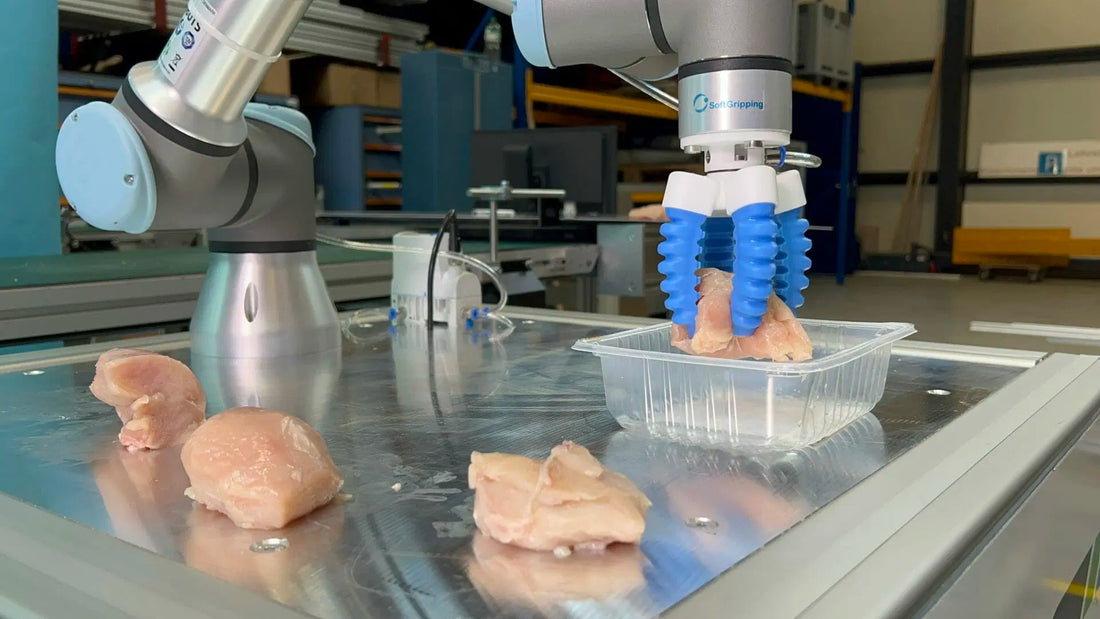
The Transformative Impact of Robotic Grippers on the Manufacturing Industry
Share

In the ever-evolving landscape of manufacturing, technological advancements have always driven efficiency and innovation. One such groundbreaking technology is the robotic gripper, also known as an end effector. This device, attached to the end of robotic arms, has revolutionized how industries handle, manipulate, and move objects within automated processes.
Robotic grippers not only enhance efficiency and precision but also ensure safety by automating tasks that are dangerous for humans, such as handling hazardous materials or operating in extreme environments. For investors, robotic grippers represent a high-potential opportunity, as their adoption grows across industries like automotive, aerospace, medical, and food and beverage.
Unveiling the Versatility of Robotic Grippers
The versatility of robotic grippers lies in their adaptability to various industrial applications. Here are the key types of grippers and their specific use cases:
1. Pneumatic Grippers
o Use: Operate with compressed air, ideal for handling lightweight or delicate objects.
o Benefits: Cost-effective and easy to maintain, making them suitable for small and medium-sized enterprises.
2. Electric Grippers
o Use: Employ electric motors for high-speed and high-precision tasks.
o Benefits: Capable of handling heavy loads with adjustable gripping force for diverse applications.
3. Vacuum Grippers
o Use: Utilize suction to manage flat or irregularly shaped objects.
o Benefits: Low-cost, versatile, and compatible with other gripper types for added flexibility.
4. Hydro-Mechanical Grippers
o Use: Combine fluid pressure with mechanical motion for heavy-duty applications.
o Benefits: Handle large, heavy, or irregularly shaped objects effectively.
5. Magnetic Grippers
o Use: Leverage magnets to manipulate ferromagnetic materials.
o Benefits: Handle fragile parts with precision, commonly used in manufacturing and assembly.
6. Servo-Electric Grippers
o Use: Feature servo motors for precise control and speed in gripping.
o Benefits: Widely applied in assembly lines, material handling, and packaging in industries like automotive and electronics.
Technological Advancements Powering Robotic Grippers
The integration of advanced technologies has significantly enhanced the performance of robotic grippers.
· Internet of Things (IoT): Enables real-time data collection and connectivity, optimizing performance and streamlining operations.
· Data Science and Machine Learning: Analyzes patterns and predicts object behavior, improving grasping and manipulation capabilities.
· Artificial Intelligence (AI): Empowers grippers to adapt to new scenarios, implement advanced grasping strategies, and troubleshoot autonomously.
These technologies make robotic grippers more efficient, versatile, and capable of handling diverse industrial requirements.
Global Adoption of Robotic Grippers
United States
The U.S. is a leader in robotic gripper innovation, with notable companies such as SCHUNK, Festo, Destaco, and Soft Robotics pioneering new technologies.
· Applications: Logistics and e-commerce industries extensively use robotic grippers to automate repetitive tasks, enhancing employee experience and operational efficiency.
· Research Breakthroughs: Institutions like North Carolina State University are developing cutting-edge grippers capable of precise tasks, such as lifting human hair, with applications in biomedical technologies.
China
China is rapidly advancing in robotic gripper technology, driven by leading companies like Siasun Robot & Automation and Estun Automation.
· Industries: The food and beverage sector, manufacturing, and logistics dominate robotic gripper use.
· Innovation: Research institutions such as the Chinese Academy of Sciences are focusing on soft robotics for delicate and irregular object manipulation.
Competitive Landscape: Key Players and Strategies
The robotic gripper market is competitive, with global players leveraging strategic initiatives to maintain their edge.
· Top Companies: SCHUNK GmbH & Co. KG, Festo, Kuka AG, Piab AB, and Destaco.
· Strategies: Companies are introducing innovative products, forming partnerships, and pursuing acquisitions to expand their market share.
Why Robotic Grippers Are a Smart Investment
1. Growing Demand Across Industries: With applications spanning automotive, healthcare, and e-commerce, robotic grippers are essential for automation.
2. Technological Integration: IoT, AI, and machine learning ensure continuous innovation and efficiency.
3. Global Market Expansion: Increasing adoption in emerging markets like China and India indicates robust growth potential.
4. Cost Optimization: Automation with grippers reduces operational costs and mitigates labor shortages.
The Future of Manufacturing is Here
Robotic grippers are not just tools—they are game-changers in the manufacturing industry. Their ability to enhance precision, efficiency, and safety makes them indispensable in today’s automation-driven world.
For investors, the robotic gripper market offers immense potential for growth and innovation. By capitalizing on this transformative technology, investors can shape the future of manufacturing while achieving substantial returns.